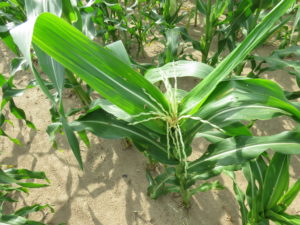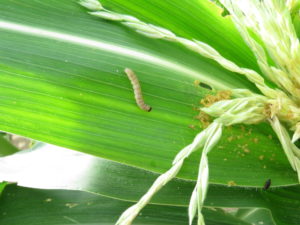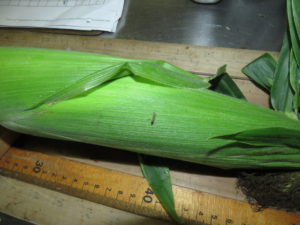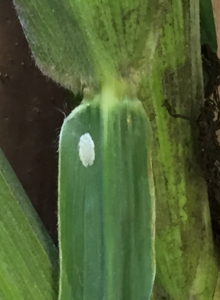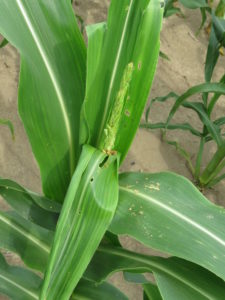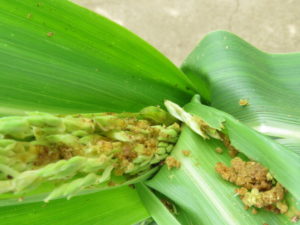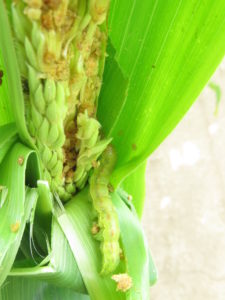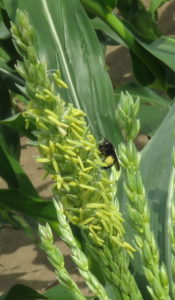The sweet corn variety plots at Pinney Purdue provide a good chance to observe sweet corn insects. In late July I observed two caterpillars that surprised me. The first was European Corn Borer (ECB), in the tassel where they are often found (Figures 1 & 2). It was a surprise because I have seen many fewer of these in the sweet corn plots in recent years. I understand from the entomologists that it is due to the widespread use of Bt field corn that has resulted in much lower populations of ECB. The week of Aug. 19 I observed an ECB egg mass on a flag leaf and a young larva on the ear (Figures 3 & 4).
The second late July observation was a corn earworm (CEW)–the insect itself is not surprising, but it was in the tassel! (Figures 5-8). I have previously only seen them in ears. The sweet corn had just begun to silk, and based on trap counts, there had been large flights of CEW the previous few weeks, so probably there was no silk available for egg-laying when the egg for this larva was laid. Due to delayed plantings we have been getting reports of CEW in places where they are not commonly found, a result of asynchrony of the pest with the preferred host most likely.
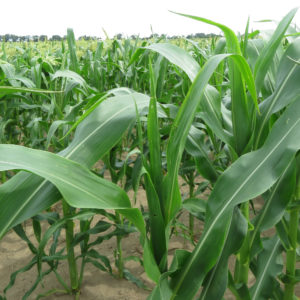
Figure 5. Holes in upper leaves alert scout to possible caterpillar in tassel.
For information on managing sweet corn pests, refer to the Purdue Extension Bulletins E-31 about CEW https://extension.entm.purdue.edu/publications/E-31/E-31.html, and E-98 about all sweet corn insect pests https://extension.entm.purdue.edu/publications/E-98/E-98.html. And don’t forget to check the CEW trap counts https://extension.entm.purdue.edu/cornearworm/index.html mentioned by Dr. Ingwell in a previous article https://vegcropshotline.org/article/corn-earworm-trapping-is-underway/.
The third insect I observed was a bee collecting pollen from the tassel (Figure 9). This was a good reminder that managing insects is a compromise between avoiding unacceptable damage to the crop and protecting beneficial and non-damaging insects from harm. Purdue Extension Bulletin POL-2 https://extension.entm.purdue.edu/publications/POL-2/POL-2.html provides solid information for vegetable and fruit farmers about protecting pollinators.
